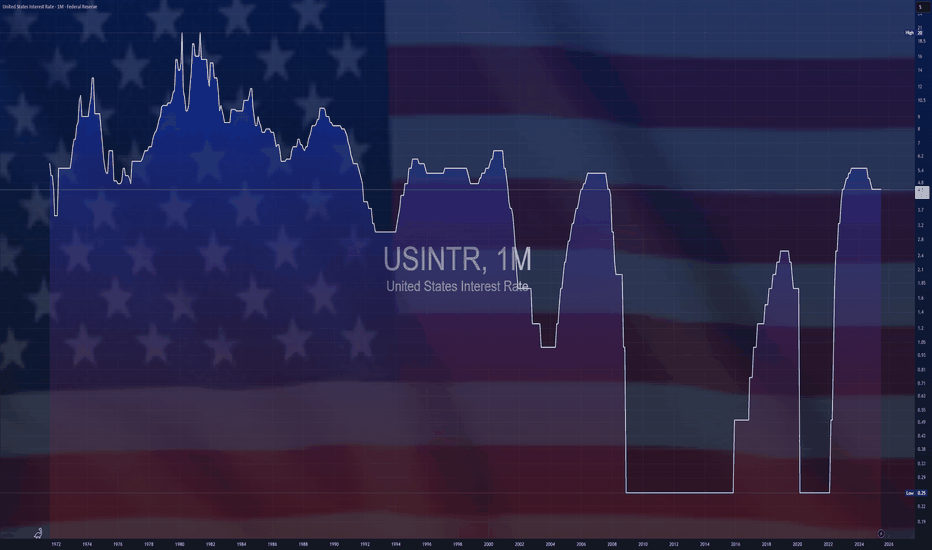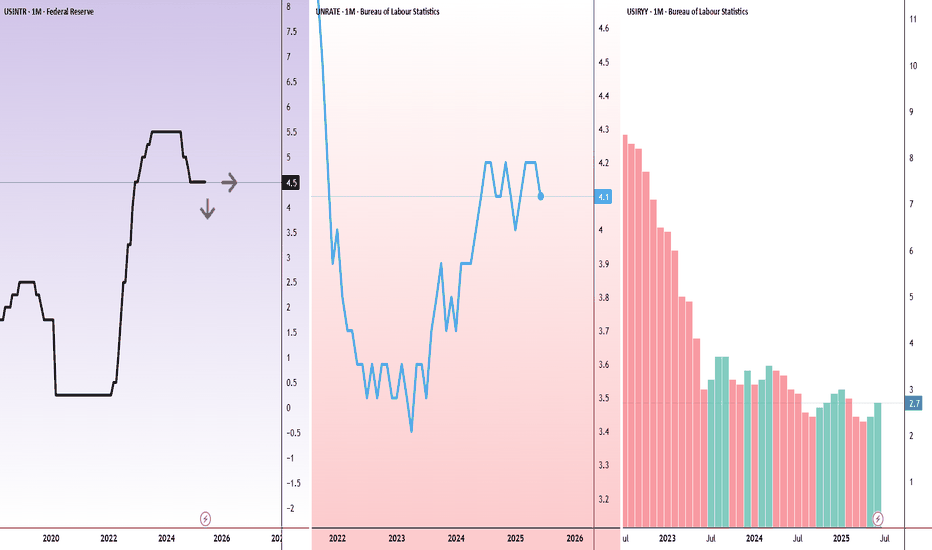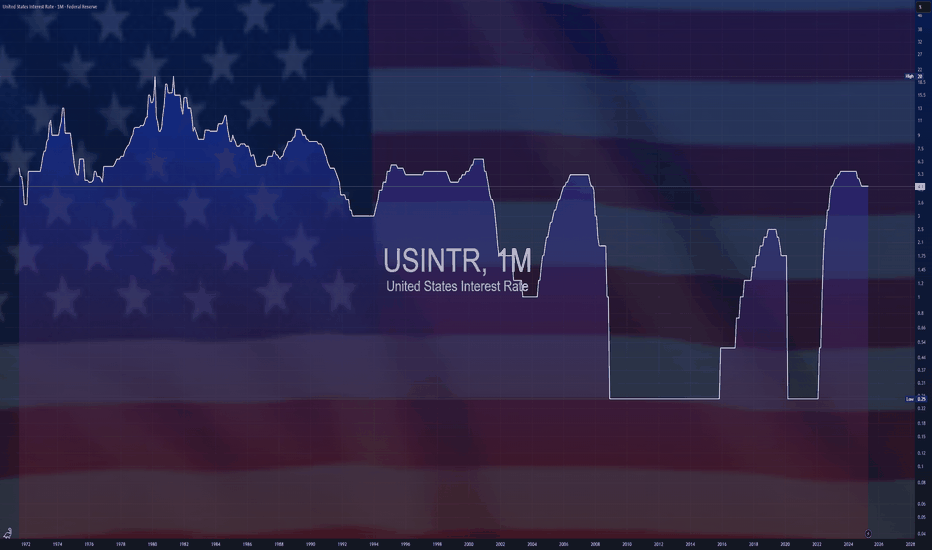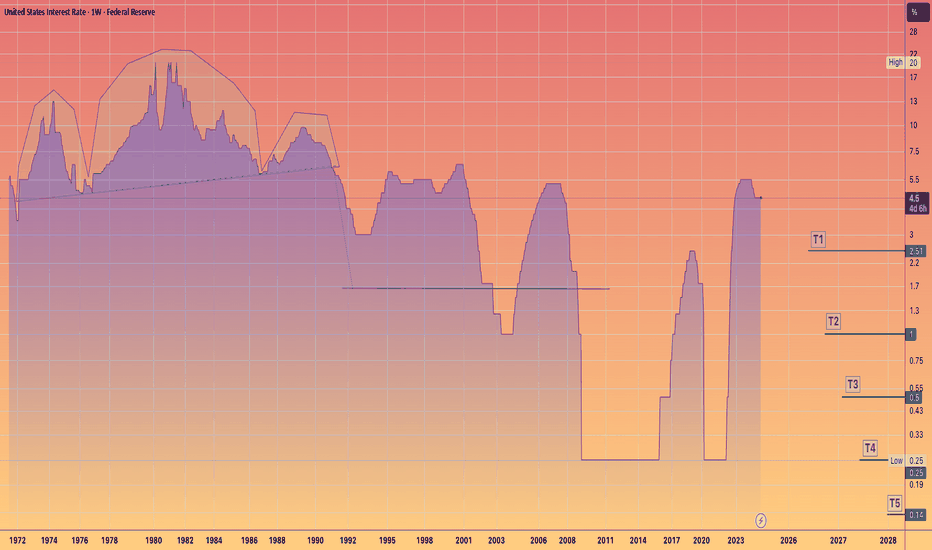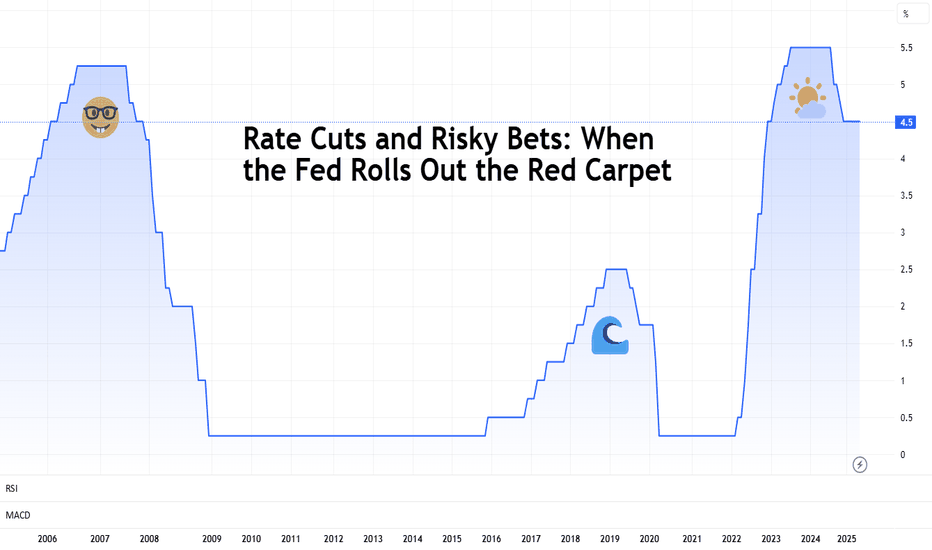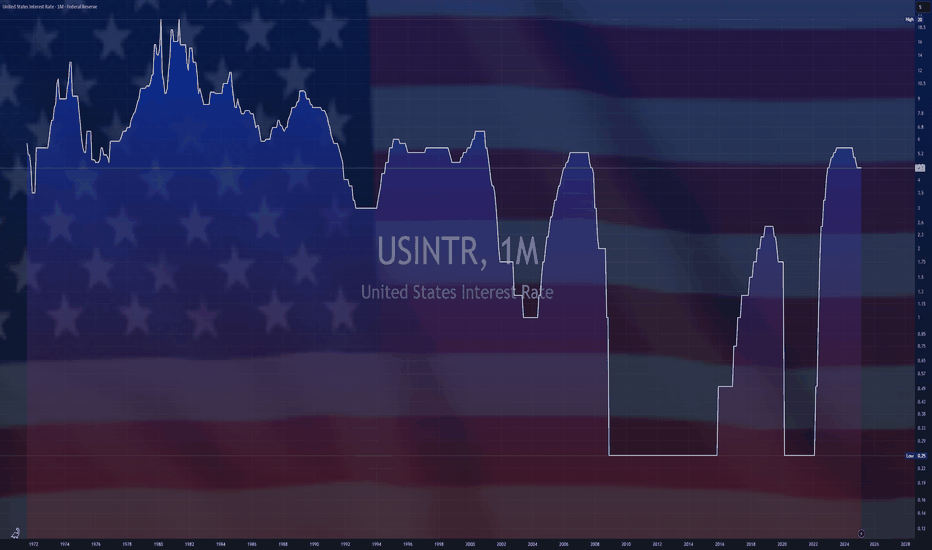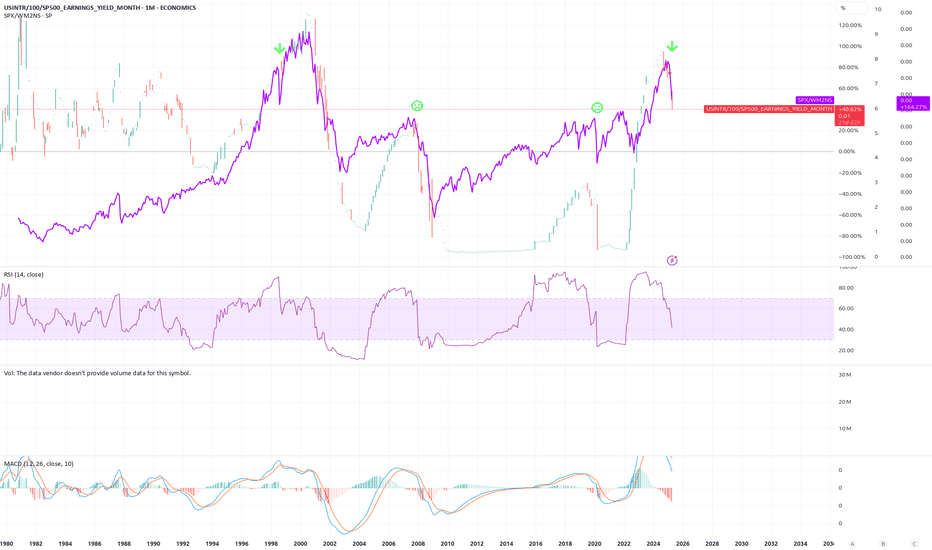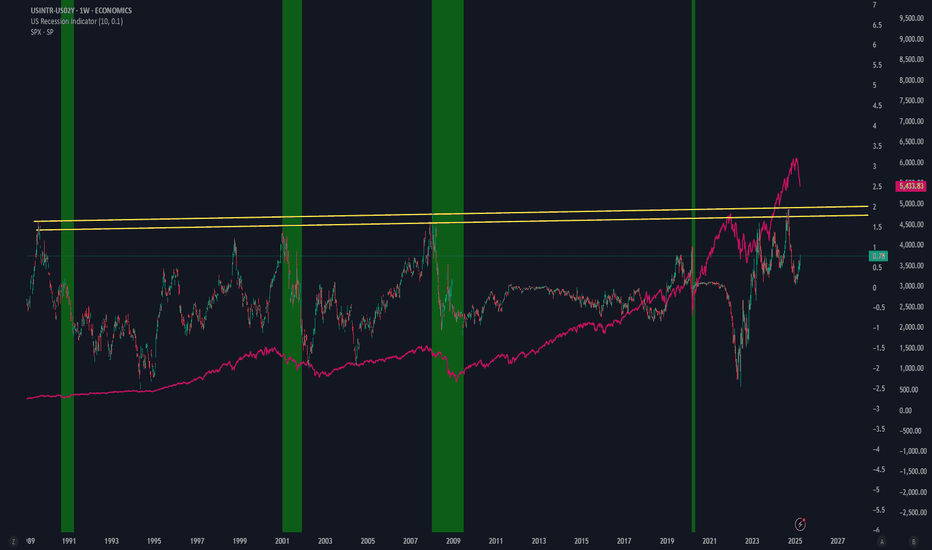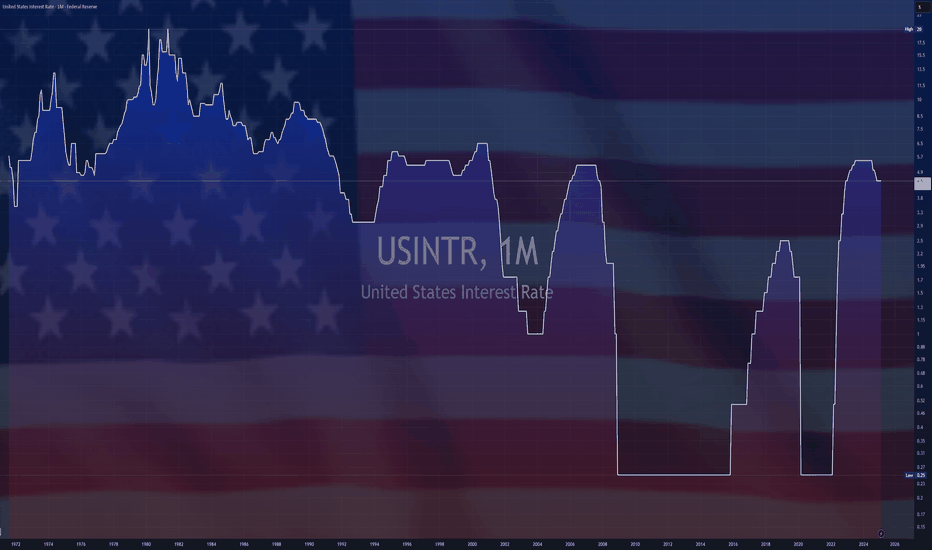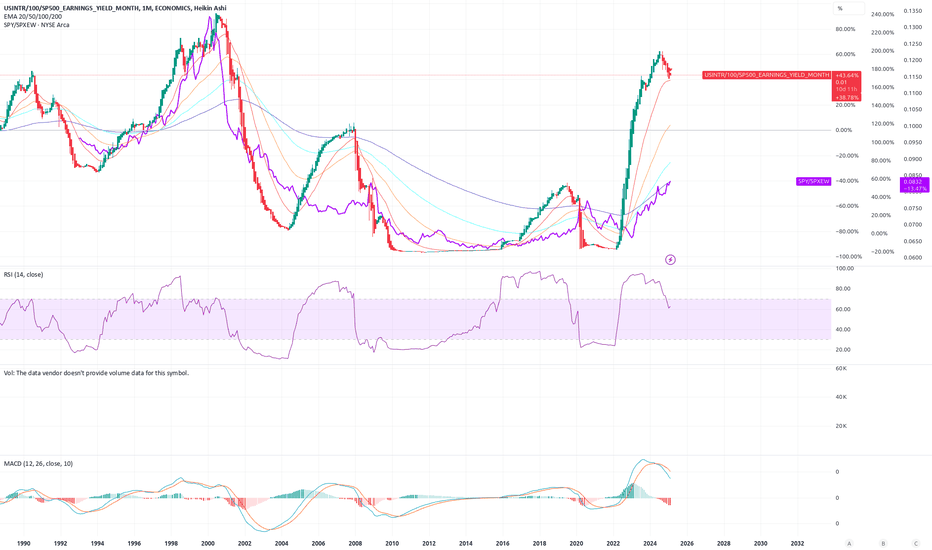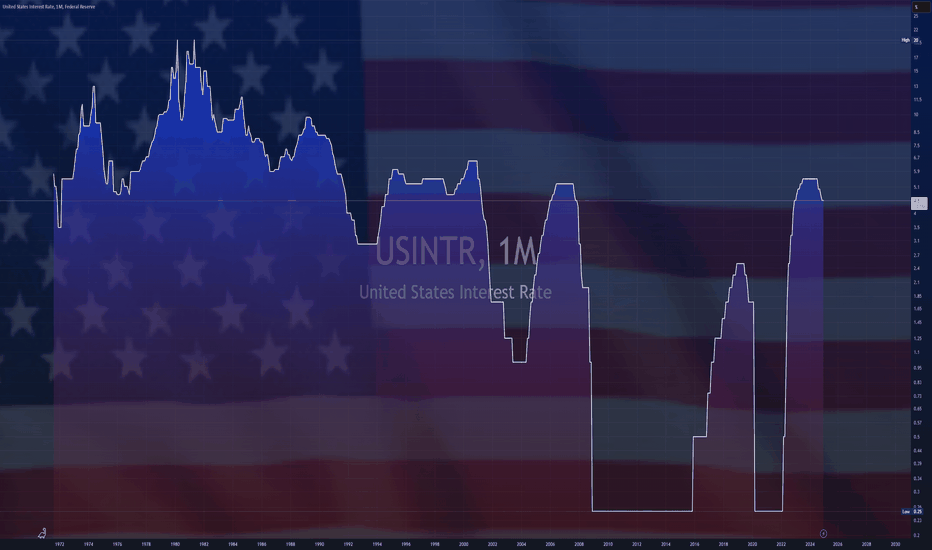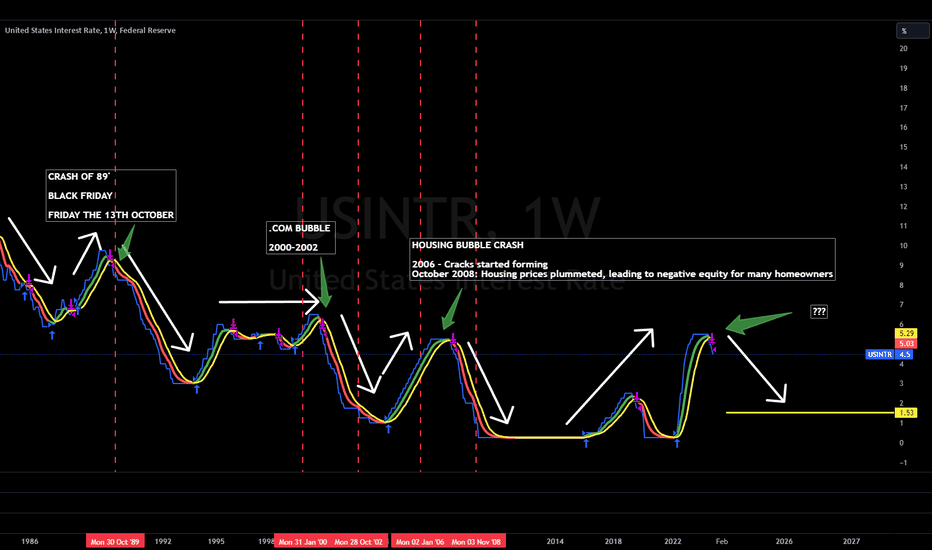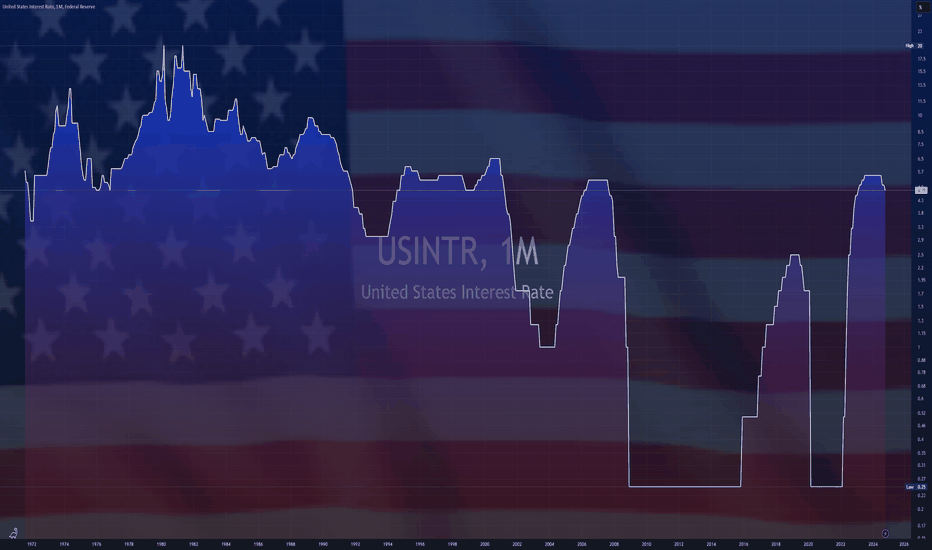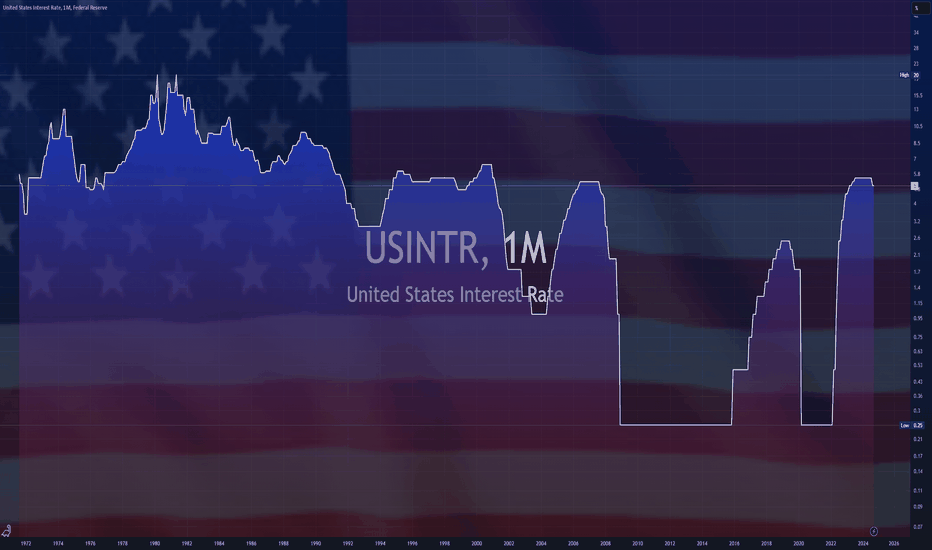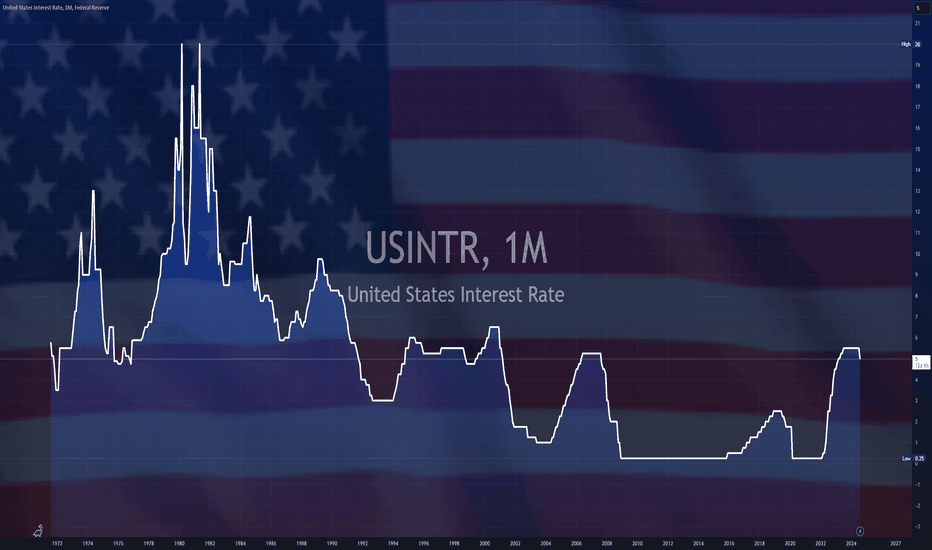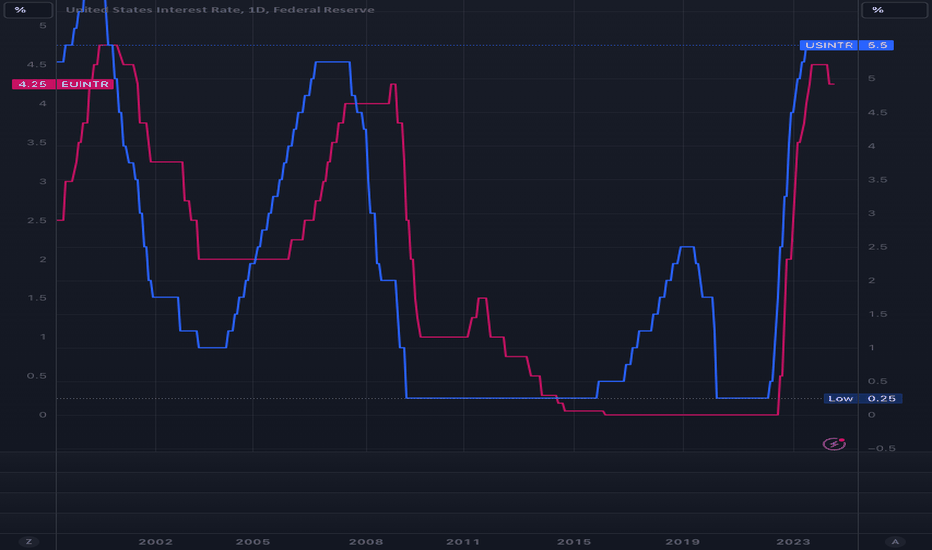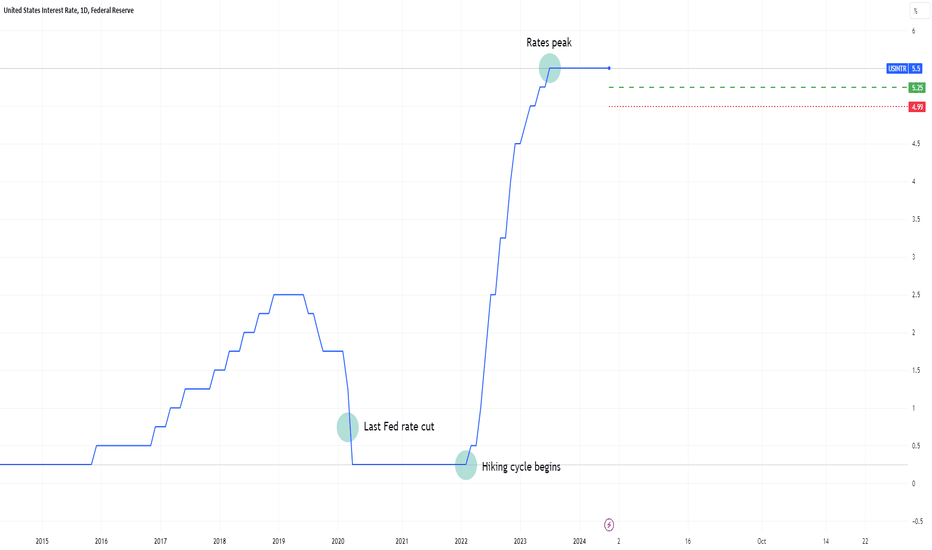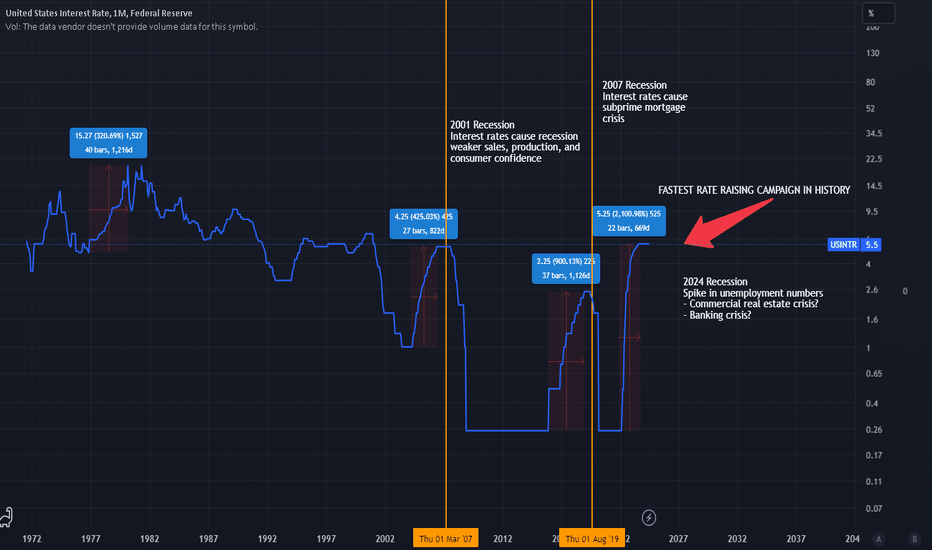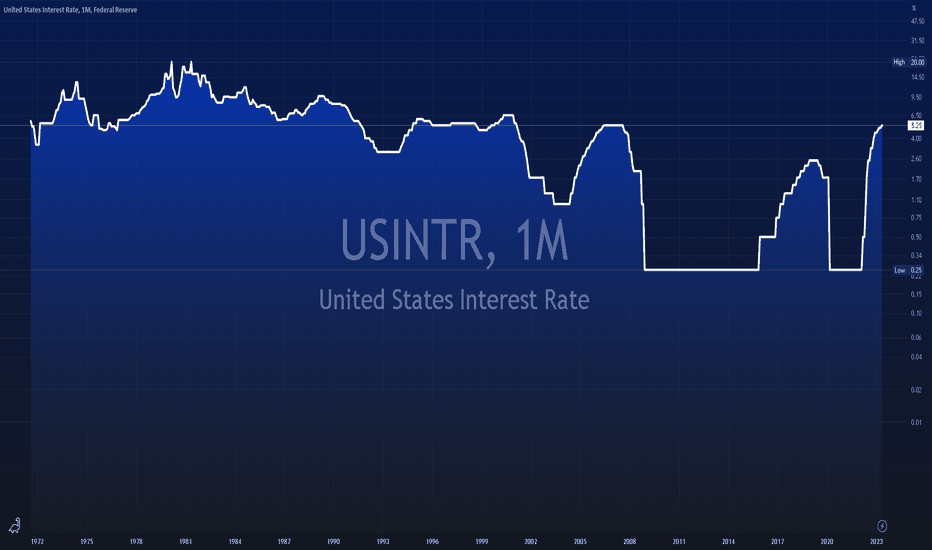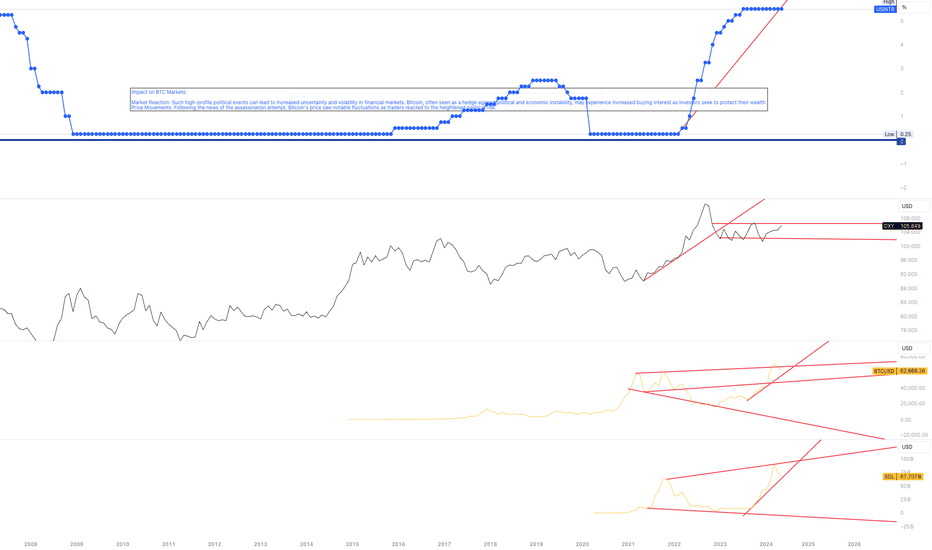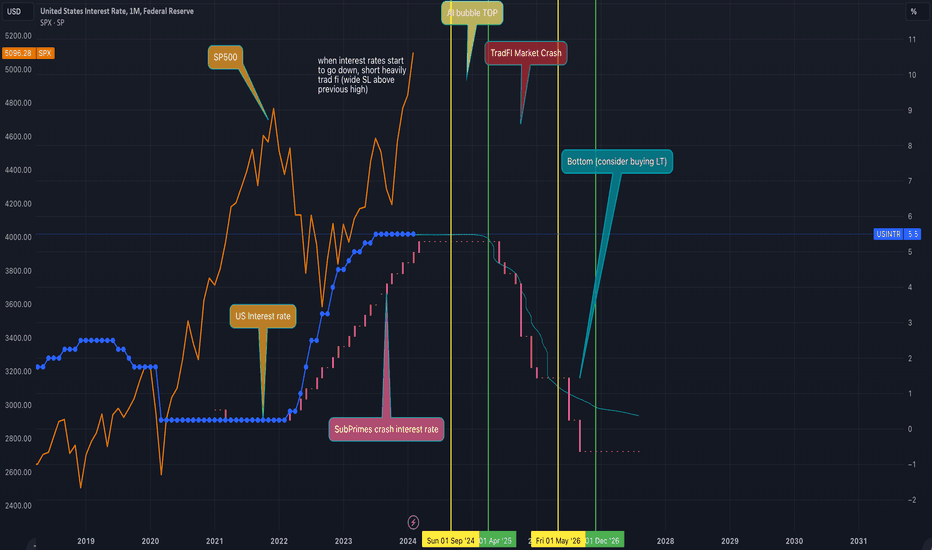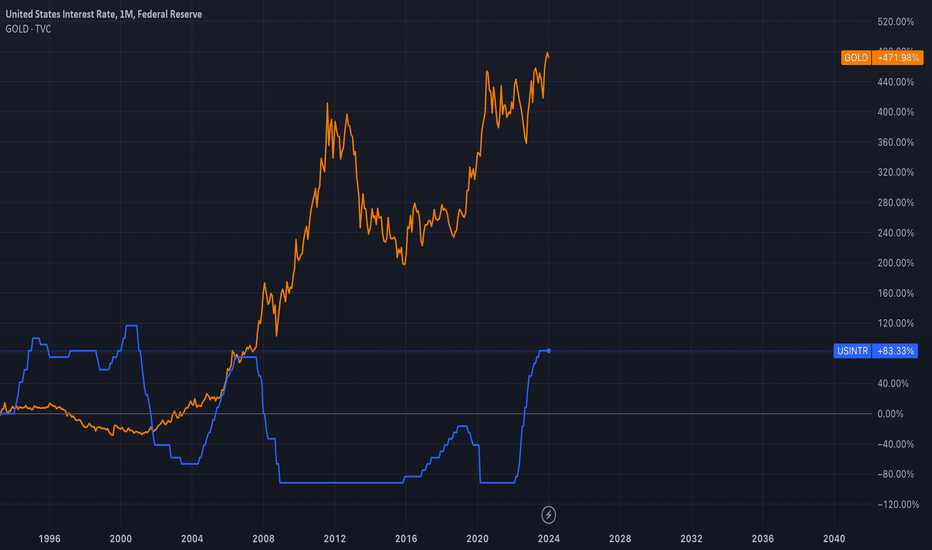$USINTR -Feds Leaves Rates Steady (July/2025)ECONOMICS:USINTR
July/2025
source: Federal Reserve
- The Federal Reserve held rates steady at 4.25%–4.50% for a fifth straight meeting, defying President Trump’s demands for cuts even after positive GDP growth .
Still, two governors dissented in favor of a cut—the first such dual dissent since 1993.
Policymakers observed that, fluctuations in net exports continue to influence the data, and recent indicators point to a moderation in economic activity during the first half of the year.
The unemployment rate remains low, while Inflation somewhat elevated.
USINTR trade ideas
Latest on Fed rate cut debateThe Fed isn’t expected to cut rates this week, but this FOMC meeting should still be very interesting.
Powell will need to address growing pressure from board members Waller and Bowman, who’ve both called for cuts, citing limited inflation impact from tariffs.
Still, Powell is just one of 12 votes on the FOMC, and there’s little sign of broader support for a cut.
With the labour market steady and early signs of tariff-driven inflation, the Fed has reason to hold. The rate decision is due Wednesday at 2 p.m. ET, followed by Powell’s press conference at 2:30 p.m. ET.
This decision will further widen the rift between the Fed and President Trump, whose frustration has grown in recent weeks, with renewed attacks on Powell’s leadership.
The tension has drawn international attention. On Monday, the IMF issued a warning about political interference in central banks, which can pose a threat to global financial stability.
$USINTR -Fed Keeps Rates Uncut (June/2025)ECONOMICS:USINTR
June/2025
source: Federal Reserve
- The Federal Reserve left the federal funds rate unchanged at 4.25%–4.50% for a fourth consecutive meeting in June 2025, in line with expectations, as policymakers take a cautious stance to fully evaluate the economic impact of President Trump’s policies, particularly those related to tariffs, immigration, and taxation. However, officials are still pricing in two rate cuts this year.
Mr. LATE drop the RATE!!"Jerome Powell aspires to be remembered as a heroic Federal Reserve chair, akin to Tall Paul #VOLKER.
However, Volker was largely unpopular during much of his tenure.
The primary function of the Federal Reserve is to finance the federal #government and ensure liquidity in US capital markets.
Controlling price inflation should not rely on costly credit.
Instead, it should be achieved by stimulating growth and productivity through innovation and by rewarding companies that wisely allocate capital, ultimately leading to robust cash flows... innovation thrives on affordable capital.
While innovation can lead to misallocations and speculative errors, this is a normal aspect of the process.
(BUT it is crucial that deposits and savings are always insured and kept separate from investment capital.)
By maintaining higher interest rates for longer than necessary, J POW is negatively impacting innovators, capital allocators, small businesses that need cheap capital to function effectively, job creators, and the overall growth environment.
Addressing price inflation is a far more favorable situation than allowing unemployment to soar to intolerable levels.
"Losing my job feels like a depression".
But if I have to pay more for eggs, I can always opt for oats.
Rate Cuts and Risky Bets: When the Fed Rolls Out the Red Carpet🎬 The Fed’s June Meeting Is Around the Corner
Mark your calendars: June 17–18 is when the Federal Reserve's Federal Open Market Committee (FOMC) convenes next. With the benchmark interest rate ECONOMICS:USINTR currently holding steady at 4.25% – 4.50%, investors and policymakers alike are keenly awaiting any signals of a shift in monetary policy.
Market expectations suggest a cautious approach, with futures markets indicating a modest probability of rate cuts in the latter half of the year. That said, the upcoming meeting could offer some juicy insights into the Fed's outlook — yes, in this economy.
🤝 Trump vs. Powell: The Sequel No One Asked For
President Donald Trump and Fed Chair Jerome Powell recently had their first face-to-face meeting during Trump’s second term, rekindling a familiar tension. Trump criticized Powell for maintaining high interest rates, saying it puts the US at an economic disadvantage compared to countries like China.
Not too surprising, Trump’s tone, that is. As a matter of fact, it’s way softer than when the President called the Fed chair a “major loser.”
Anyway, Powell was holding back at the meeting, saying that the Fed is independent and that monetary policy decisions are based on objective economic data, not political pressure.
Despite Trump's public and private criticisms, Powell remains steadfast in his approach, focusing on long-term economic stability over short-term political considerations.
📉 Inflation, Employment, and the Tightrope Walk
Inflation has decreased significantly from its peak of 9.1% in 2022 to 2.3% in April 2025 , nearing the Fed's 2% target. However, the labor market remains robust, with unemployment rates at historically low levels.
The Fed faces a delicate balancing act: cutting rates too soon could reignite inflation, while maintaining high rates might dampen economic growth. This tightrope walk requires careful analysis of incoming data and a measured approach to policy adjustments.
🛍️ Market Reactions: Bulls, Bytes, and Bullion
If rate cuts are the rumor, the S&P 500 SP:SPX is already buying the headline. The index clawed back all of its early-year slump and now sits just above the flatline. Traders are clearly pricing in a friendlier Fed, even if Jerome Powell hasn’t sent out the official RSVP yet.
Gold OANDA:XAUUSD , meanwhile, has been doing what it does best — quietly flexing in the corner as uncertainty swirls. Prices bounced back above $3,300 in late May, reminding everyone that when central banks blink, bullion blings. A rate cut could weaken the dollar — and gold’s inverse relationship with the greenback suddenly looks like a playbook move.
Speaking of the dollar, the dollar index TVC:DXY has been wobbling like it’s just finding its feet. With inflation softening and tariff noise all over the place, the buck has lost some swagger . Traders are already rotating out of safe havens and into riskier plays, including…
Yep, Bitcoin ( BTCUSD ).
Crypto’s original bad boy is back on the move, orbiting near $110,000 after rewriting its all-time high book in May.
A dovish Fed can technically pour more rocket fuel into the rally, especially as sovereign adoption and ETF flows keep pumping ( $9 billion in just five weeks?! ). In the land of easy money, Bitcoin doesn’t just survive — it thrives.
The takeaway? Markets love a dovish pivot. Whether you're holding stocks, stacking sats, or eyeing gold bars, the Fed’s next move could be the difference between breakout and breakdown.
🧠 What to Keep in Mind
As the June Fed meeting approaches, traders should consider the following strategies:
Diversification: Maintain a diversified portfolio to mitigate risks associated with interest rate volatility.
Equity Exposure: Evaluate exposure to sectors sensitive to interest rates, such as the good old tech space and throw in some financials — banks love rate moves.
Inflation Hedges: Consider assets like gold or silver to hedge against unexpected inflationary pressures.
🧾 Conclusion: Navigating Uncertainty
The June Fed meeting isn’t just another calendar event — it’s a market-defining moment dressed in central bank jargon. With politics heating up and inflation cooling down, Powell’s next move could either pump more cash into the risk rally or throw cold water on the party.
Yes, the noise is loud. Yes, the data is messy. But through it all, one thing holds: staying nimble beats being early. Whether you're riding the S&P 500, hodl’ing Bitcoin, or hugging gold like a doomsday prepper, this is the time to trade the chart, not the chatter.
Off to you : Are you in the rate-cut camp or you think there’s more ground to cover before Powell and his squad tune the pitch down? Comment below!
$USINTR -Fed Keeps Rates Unchanged (May/2025)ECONOMICS:USINTR
May/2025
source: Federal Reserve
- The Federal Reserve kept the funds rate at 4.25%–4.50% range for a third consecutive meeting as officials adopt a wait-and-see approach amid concerns about the effects of President Trump’s tariffs.
Policymakers noted that uncertainty about the economic outlook has increased further and that the risks of higher unemployment and higher inflation have risen.
4/8/25 - one more i keep staring at. i'll keep it short!One more from me tonight, friends,
I keep staring at this chart which plots (the scatter-like print) ST rates vs. S&P earnings yield and also shows the S&P adjusted by M2 (purple).
I believe one or the other is likely true.
1/ we're in the middle of a mega bull run that began in '09 and never really ended, given low rates, tons of tech-led innovation (with cash flows) and the current correction is a pause (similar to the GREEN ARROW in '98) before continuing much higher and with rates remaining high and potentially even headed incrementally higher as stocks climb the wall of worry.
2/ we're undergoing a WTF growth scare, a geopol reordering, inability to look through for many months (or even a year) and causing such a financial meltdown that rates will be forced to head back to zero and stocks maybe undergo another 20-30% lower (the FROWNY FACES).
My guess is it's #1.
- the current spat is Trump-induced.
- it's not a meltdown of credit markets (well... yet...)
- there's not a fake _____ (event of any sort) causing freak out
- and also... unlike dotcom, which ran HARD, we've had some pullbacks along the way in this recent multi-year run, testing the thesis... notably mar '20 and end '22. these tech leaders are v cash generative and there's a good reason to believe they'll continue to gain strength
all this would translate into a massive run into '28, if #1 is correct.
so now that we're in pure correlation 1, margin call territory etc. etc. we have the "can't look through, need help or some resolution event"
so once that resolution comes. we probably boot, rally, retest. and rip.
hard to do this on leverage b/c V might not be the shape of recovery (at least that's not how i'd play it, i still prefer to use deep ITM LEAPS for some flex)
but let's see.
this chart has my attention once again.
V
$USINTR - U.S Interest Rates (March/2025)ECONOMICS:USINTR
March/2025
source: Federal Reserve
- The Fed keep the funds rate unchanged at 4.25%-4.5%,
but signaled expectations of slower economic growth and rising inflation.
The statement also noted that uncertainty around the economic outlook has increased, but officials still anticipate only two quarter-point rate reductions in 2025.
2/18/25 - general mkt observationsi'd rather be sippin' pina coladas on the balcony at this stage than continue at the beach party with clear skies darkening. think i've just been there, done that enough to not want to play the last minute FAFO game as much as one can possibly avoid it.
so when i look out over the next 12 months... yup... let me stop right there... i don't think we can do that and i get the sense that everyone is doing just this. do i think we'll end the year higher on the index vs. where we stand today? yes. but do i think we just keep chugging along in the clown car in the same fashion as last year. no.
there are a lot of things that changed in the last 3 months. take for instance, how volatile the tape has become (once again) on trump's shower or toilet tweets. less taco bell, more pepto pls. but the reality is, we're just trading the tape we're presented to. any emotional reaction you have to any of it is a disadvantage to your pnl and a benefit to the zero sum other guy *well* computer. DOGE matters. dollar dominance and signaling matters. rates matter. tariffs matter. china matters. all of a sudden, the soup might include a bat. nah. that's for a fairy tale.
take a look at this chart.
i've plotted ST rates vs. S&P earnings yield and flipped on some haikin ashi action for the candles to show trends as more obvious. while we could argue about infinite topics in the >12 month context for each of these... simply put... ST rates look... competitive. even in the fake video game we all play, we get to choose different doors, weapons, opinions to follow. opportunity cost matters.
and so when i see the rolling over of this trend PLUS dominance of market cap weighted S&P vs. equal weight S&P (SPXEW/SPY)... this also tells me there's an embedded premium in these "will survive better than the others" boats. Bitcoin dominance (BTC.d in trading view) shows you the same thing. Everyone has been chitcoinin' but realizes now the zero-sum game of 99% of these things and the conclusion is... "settle into USDT and BTC". ultimately, that purple line (back to the trad mkts) indicates we might be reaching a point where growth is unclear, the path is unclear... and therefore... any relevant catalyst (like a headline about China-Taiwan... EVEN IF IT WON'T HAPPEN) could throw these markets off 5-10% easily. maybe that's all we get. maybe there's something else. right now we don't have that catalyst.
it's getting a bit spooky out here. we will keep playing our earnings game. liking what we like
BTC
,
NXT
,
UBER
, tsm... incubating a few others like
EVVTY
,
BLDE
, mu. i can't HELP but to keep my cash balance awkwardly high.
i don't mind jumping back in the pool. but my swimsuit is dry. the pina colada is chilly. and the whispy air coming in off the rocky ocean sends a feel-good shiver up my spine.
something's off, but in a good way. opportunity is coming. be vigilant. risk manage. know what you own. know what you want to own if/when/for how much.
have a good week.
V
$USINTR -U.S Interest Rates ECONOMICS:USINTR
(January 2025)
source: Federal Reserve
-The Fed kept the funds rate steady at the 4.25%-4.5% range as expected, pausing its rate-cutting cycle after three consecutive reductions in 2024.
The Fed showed more optimism about the labor market and noted that inflation remains somewhat elevated, removing the reference to ongoing progress toward the 2% target.
The Fed also said the economic outlook is uncertain, and is attentive to the risks to both sides of its dual mandate.
2025 STOCK MARKET PREVIEW – It's a BEAST!2025 Stock Market Preview – It's a BEAST!
You are going to want to watch this video as it's JAM packed with great information for the new year! It may be long but aren't you trying to learn and become a better investor or trader?!
Get ready for 1 HOUR of action-packed, game-changing insights:
-Economic data
-Technical analysis on NASDAQ:QQQ AMEX:SPY AMEX:IWM
-My 2025 predictions
-How to prep for the next stock market crash
-How I'll be monitoring the markets
What do you think will happen in 2025? Share your thoughts in the comments below!
You won't find this much FREE CONTENT anywhere else! Let's dive in!
$USINTR - Fed's Third Rate Cut (December/2024)ECONOMICS:USINTR
(December/2024)
source: Federal Reserve
-The Fed announced another 25bps cut to the federal funds rate in December 2024,
marking the third consecutive reduction this year and bringing borrowing costs to the 4.25%-4.5% range, in line with expectations.
The so-called dot plot indicates that policymakers now anticipate just two rate cuts in 2025, totaling 50 basis points, compared to the full percentage point of reductions projected in the previous quarter.
The Fed also revised its GDP growth forecasts upward for 2024 (2.5% vs to 2% in the September projection) and 2025 (2.1% vs 2%), while remaining steady at 2% for 2026.
Similarly, PCE inflation projections have been adjusted higher for 2024 (2.4% vs 2.3%), 2025 (2.5% vs 2.1%), and 2026 (2.1% vs 2%).
The same trend applies to core PCE inflation, with forecasts raised for 2024 (2.8% vs 2.6%), 2025 (2.5% vs 2.2%), and 2026 (2.2% vs 2%).
On the other hand, unemployment is seen lower this year (4.2% vs 4.4%) and in 2025 (4.3% vs 4.4%) while the forecast was kept at 4.3% for 2026.
$USINTR -Feds Cuts RatesECONOMICS:USINTR
(November/2024)
source: Federal Reserve
-The Fed lowered the federal funds target range by 25 basis points to 4.5%-4.75% at its November 2024 meeting, following a jumbo 50 basis point cut in September, in line with expectations.
Policymakers reiterated their previous message that they will carefully assess incoming data, the evolving outlook, and the balance of risks when considering additional adjustments to borrowing costs.
On the economic front, the Fed noted that recent indicators suggest that economic activity has continued to expand at a solid pace.
Since earlier in the year, labor market conditions have generally eased, and the unemployment rate has moved up but remains low.
Inflation has made progress toward the 2% objective but remains somewhat elevated.
However, officials removed a reference they had “gained greater confidence” that inflation is moving toward the target.
$USINTR -Fed Cuts Rates by 50 BPS ECONOMICS:USINTR
- The Federal Reserve lowered its benchmark interest rate by 50bps to 4.75%-5% in light of the progress on inflation and the balance of risks.
It is the first rate cut since March 2020 after holding it for more than a year at its highest level in two decades.
Will Feds decision of cutting 50bps tumble the markets in spite of fear for U.S and Global Markets indicating Recession brewing around the corner ?
PIMCO Warning on Fed's First Cut in 4 Years next week The only event that matters next week is the US Federal Reserve's interest rate decision, which could result in its first rate cut in over four years
PIMCO analysts, in a fresh note, outlined what could be in store for the U.S. dollar as the Fed embarks on its rate-cutting cycle. Historically, the dollar has shown a tendency to weaken, at least briefly, following the Fed’s initial rate cuts since the 1990s.
The Fed now faces a tight decision on whether to opt for a larger-than-expected half-point cut or stick with a quarter-point reduction.
An aggressive half-point move could raise concerns that the central bank is concerned about the economic outlook for the US, potentially prompting markets to price in further, more drastic rate cuts beyond the Fed's current trajectory.
Knock Knock. Who's There? Vibecession Ft. US Interest RatesHello Everyone,
IMPORTANT: ALL FED POLICIES LEAD TO NEGATIVE OUTCOMES
TLDR AT THE END
In February 2022 the Federal Reserve gave us the fastest rate raising campaign in history to try and combat very high inflation, but they were very late in raising rates causing one of the worst inflation in 40 years. During his speech at Jackson Hole he confirms rate cuts in September due to inflation being under control and the labor market "cooling." Good news is inflation is under control, however this is only the start of our labor market "cooling."
Jerome Powell is extremely late in cutting rates and will be cutting rates because we are getting BAD economic data and the cracks are showing in our labor market, commercial real estate, and banking sectors.
The Federal Reserve 100% KNOWS a recession is coming that is why they are cutting rates. We have Jerome Powell come up on stage sweet talk to us about a soft landing, inflation under control, and how he will cut rates to help the labor market. He's not going to be instilling fear in Americans as a chairman.
Just Remember, ALL FED POLICIES LEAD TO NEGATIVE OUTCOMES. Recession is coming, Sahm rule and inverted yield curve hasn't been wrong and it won't be wrong this time. This time it's not different.
TLDR: Jerome Powell is too late in cutting rates causing a recession
$USINTR - A Month of BreathThe Federal Reserve left the target for the Fed Funds Rate ECONOMICS:USINTR
unchanged at 5%-5.25%, as expected, but signaled rates may go to 5.6% by Year-End if the Economy and Inflation do not Slow down more.
It is the first pause in the tightening campaign following ten consecutive hikes that lifted borrowing costs by 500bps to the highest level since September 2007.
Throughout Fed's announcement The Dollar Index TVC:DXY
plunged to what can be said Wave C completed from A-B-C
Elliot Waves Correction
(attached ideas)
Have the markets priced in Inflation ECONOMICS:USIRYY and Interest Rates ECONOMICS:USINTR ?
TRADE SAFE
*** NOTE that this is not Financial Advice !
Please do your own research and consult your Financial Advisor
before partaking on any trading activity based solely on this Idea .
Trump / Rates / Dollars / Coins, OH MY!Interest Rates and the Dollar
Interest rates, set by central banks, are a critical component of monetary policy. The Federal Reserve (Fed) in the United States uses interest rates to control inflation and stabilize the economy. When the Fed raises interest rates, it becomes more expensive to borrow money, which tends to slow down economic activity and reduce inflation. Conversely, lowering interest rates makes borrowing cheaper, encouraging spending and investment, which can stimulate economic growth.
Impact on the Dollar:
Higher Interest Rates : When interest rates rise, the yield on U.S. government bonds and other fixed-income securities increases, attracting foreign investment. This inflow of capital strengthens the U.S. dollar as investors buy dollars to purchase these higher-yielding assets.
Lower Interest Rates: Conversely, when interest rates are lowered, the yield on these investments drops, making them less attractive. This can lead to capital outflows and a weaker dollar as investors seek better returns elsewhere.
Interest Rates and Cryptocurrency
Impact on Cryptocurrencies
Cryptocurrencies like Bitcoin (BTC) and Ethereum (ETH) are often seen as alternative assets. Their relationship with interest rates can be complex:
Rising Interest Rates:
Higher interest rates can negatively impact cryptocurrencies. As safer, yield-bearing investments become more attractive, investors might shift their funds from speculative assets like cryptocurrencies to bonds and savings accounts.
Falling Interest Rates:
Lower interest rates can make traditional investments less attractive, potentially driving more investment into riskier assets like cryptocurrencies in search of higher returns.
The Importance of Policy Decisions Independent of Political Agendas
Central Bank Independence:
The independence of central banks from political influence is crucial for maintaining economic stability. When monetary policy decisions are driven by economic data rather than political agendas, it helps ensure that actions taken by central banks are aimed at achieving long-term economic goals such as controlling inflation and maintaining employment levels.
Transparency and Credibility:
Independent central banks are more likely to make transparent and credible policy decisions, which can build market confidence.
Economic Stability:
Policymaking that is insulated from short-term political pressures helps avoid economic instability that might arise from politically motivated decisions.
Recent News: Assassination Attempt on Donald Trump and Its Impact on BTC Markets
Recent News:
There was an assassination attempt on former President Donald Trump, which has created significant political and market turbulence.
Impact on BTC Markets:
Market Reaction:
Such high-profile political events can lead to increased uncertainty and volatility in financial markets. Bitcoin, often seen as a hedge against political and economic instability, may experience increased buying interest as investors seek to protect their wealth.
Price Movements:
Following the news of the assassination attempt, Bitcoin's price saw notable fluctuations as traders reacted to the heightened political risk.
Conclusion
Interest rates play a pivotal role in influencing the value of the U.S. dollar and cryptocurrencies. Central bank decisions on interest rates, when made independently of political agendas, contribute to economic stability and investor confidence. Recent political events, such as the assassination attempt on Donald Trump, highlight the sensitivity of markets, including cryptocurrencies, to geopolitical developments. Understanding these dynamics is essential for investors navigating the complex financial landscape.
AI Bubble market top forecastThis forecast study the dot com bubble and the subprime bubble (2000 and 2008) as referenced for the current AI bubble. The US interest rate serves as reference for forecasting the market top (between sep 2024 and april 2025), and the market bottom (end of 2026). DYOR, NFA.
